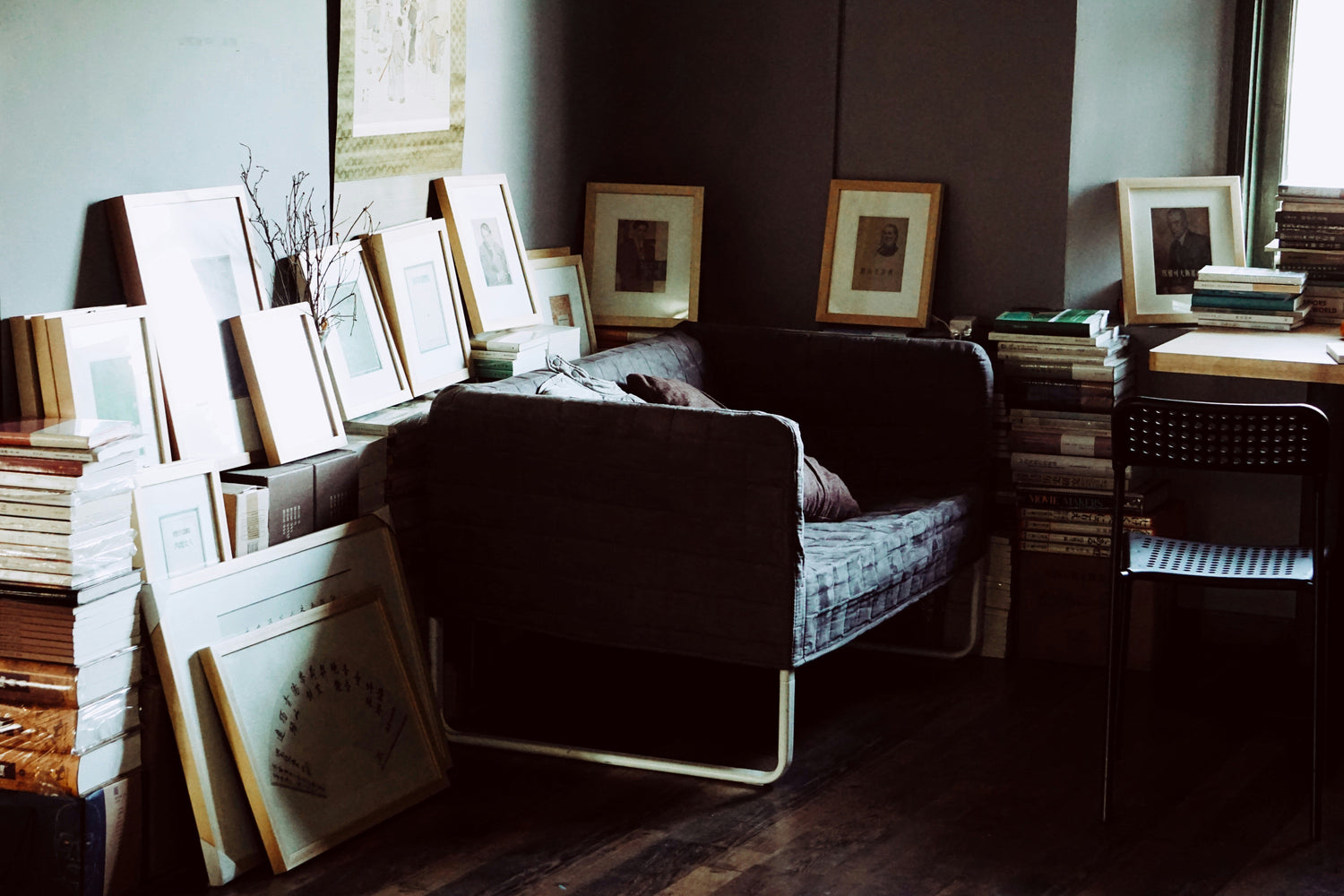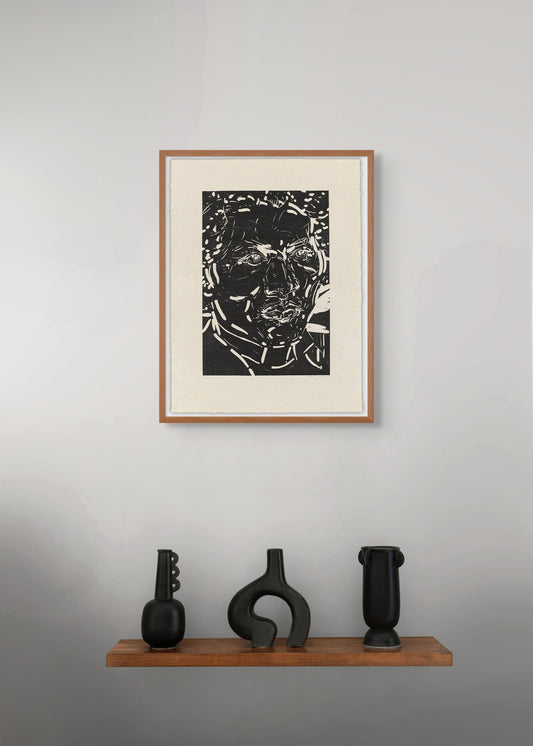Linocut belongs to the relief family of fine art printmaking. In this process, the artist carves an image into the surface of a sheet of linoleum, removing the non-image areas with gouges or knives. The remaining raised areas form the design that will receive ink. Unlike woodcut, linoleum has no grain, allowing for smoother cuts, cleaner lines, and a wide range of expressive possibilities. The result is a bold, graphic print that reflects both the precision and immediacy of the artist’s hand.
After carving, the artist rolls a thin layer of ink over the raised surface using a brayer. A sheet of paper is then placed on top, and pressure is applied either by hand or with a printing press to transfer the image. Each print, or impression, reveals the carved design in reverse. Artists can create multi-colored linocuts by using multiple blocks or through a reduction method, in which the same block is progressively carved and printed in layers of color. This straightforward yet versatile process encourages experimentation with form, texture, and color.
Linocut emerged in the early 20th century as a modern variation of woodcut, quickly embraced by artists drawn to its accessibility and expressive potential. Figures such as Pablo Picasso and Henri Matisse explored the technique for its bold shapes and vibrant color contrasts. Today, contemporary artists continue to reinterpret linocut within modern visual contexts. Elizabeth Peyton, known for her intimate portraits of cultural icons and friends, has used linocut to translate her painterly approach into a tactile and graphic medium. Her linocuts reveal how this traditional process can convey emotion while retaining the immediacy of her drawing style.
Modern printmakers often combine linocut with digital tools, collage, or hand-coloring to create rich, layered compositions. Advances in materials and inks have expanded the technique’s possibilities, allowing artists to experiment with scale, texture, and mixed-media integration.
As a relief printing technique, linocut contrasts with intaglio and planographic methods. Within the intaglio family, etching is characterized by fine lines and tonal depth, created by incising the image onto a metal plate. Lithography, by contrast, is a planographic process based on the repulsion of oil and water, allowing artists to draw directly onto a smooth surface. Together, these approaches highlight the diversity of printmaking, where each technique offers a distinct visual language.


